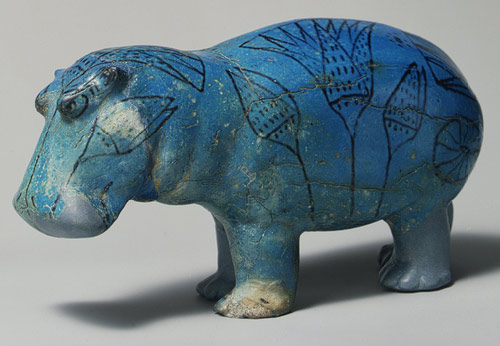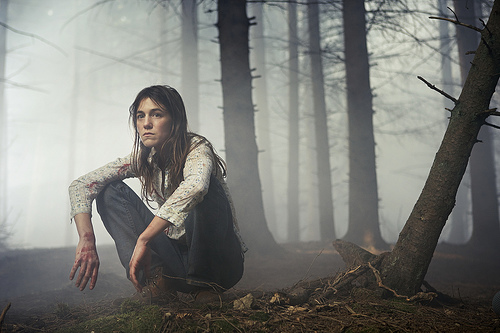#11: Splice

Directed by Vincenzo Natali, screenplay by Vincenzo Natali, Antoinette Terry Bryant, and Doug Taylor
There are films I enjoyed more than Splice this year, but it earns a place on this list for the sheer audacity of its premise and execution. Vincenzo Natali’s shocking portrayal of the creation and upbringing of a human-animal hybrid strikes a tone that falls somewhere between Gattaca and Jurassic Park, raising the former’s complex bioethical questions while striving for the latter’s excitement amid the uncontrollable chaos of the natural world. While it never quite reaches the heights of either of these films, I can safely say that it is one of the most unforgettable and shocking films I’ve ever seen. It boasts a trio of mostly strong performances, including a disturbing and utterly fearless performance from French model/actress Delphine Chanéac as the adult creature.
#10: Inception

Written/directed by Christopher Nolan
In 2008, when I named Christopher Nolan’s The Dark Knight my #3 film of the year, I simply (and lazily) wrote, “You either already know why, or you probably don’t care. See this film. If you already have, see it again.”
Nolan’s latest film, Inception, seems to provoke the opposite reaction on both counts. Its fans and detractors alike have written volumes on the subject, and most casual viewers are compelled to see it again if only to make sense of the entire mind-bending spectacle. I can’t praise the film quite as dismissively as I did The Dark Knight, but while Inception is not a perfect film, it is certainly one of the most complex visual and technical spectacles ever put to screen, and for that much alone, it must be recognized. While the film’s action descends into slightly shallower video-game territory by the end, it still manages to offer one of the finest deconstructions of reality and consciousness since The Matrix.
#9: Never Let Me Go

Directed by Mark Romanek, screenplay by Alex Garland, novel by Kazuo Ishiguro
The appeal of this film is difficult to describe without spoiling its intriguing alternate-reality premise and fantastic worldbuilding, but this is a film that succeeds masterfully at building an atmosphere that makes the audience care deeply about its characters. The film was not without its hiccups – the resolution of the love triangle seemed almost deliberately anti-cathartic – but the performances of the core cast (Carey Mulligan, Keira Knightley, and Andrew Garfield) are more than enough to make up for any of the film’s relational shortcomings.
Adam Kimmel’s cinematography makes every frame of this film look gorgeous, even with an utterly bleak color pallette (à la Children of Men), and Rachel Portman’s atmospheric score struck just the right balance to resonate with the film’s emotional beats without overwhelming them. I was not prepared for how this film would affect me, not sure exactly how to feel when it was over, and still haunted by it several days later.
#8: Winter’s Bone

Directed by Debra Granik, screenplay by Debra Granik and Anne Rosellini, novel by Daniel Woodrell
“You’ve always scared me,” says Ree (Jennifer Lawrence), a tough-as-nails 17-year-old girl who searches desperately for her meth-cooking, bail-jumping father in the Missouri Ozarks.
“That’s because you’re smart,” retorts Teardrop, in a stunningly intimidating performance from John Hawkes. Apart from a pair of brilliant performances (and an impressive supporting cast), this film’s success is in its simple, high-stakes premise – an unlikely detective story in a masterfully realized Southern Goth environment. What’s more, this is a film that keeps the audience fearing for its characters at every turn – a surprisingly rare achievement for modern cinema.
(Debra Granik’s “Winter’s Bone” – A masterful dose of guns, guts, and gloom)
#7: The Fighter

Directed by David O. Russell, screenplay by Scott Silver, Paul Tamasy, and Eric Johnson, add’l story by Keith Dorrington
This is a crowd-pleaser, plain and simple. A formulaic film can still be an effective one, and I can offer no better evidence than The Fighter. While Mark Wahlberg’s performance as boxer “Irish” Micky Ward is perfectly solid for the subject matter, the real star of this film is Christian Bale, who gives his best performance in years as the boxer’s crackhead brother, Dicky Eklund. This is a film I can safely recommend to anyone (even, surprisingly, those who don’t care about boxing).
(FilmWonk Podcast – Episode #7: David O’Russell’s “The Fighter”)
#6: How to Train Your Dragon

From Dreamworks Animation, directed by Dean DeBlois and Chris Sanders, screenplay by William Davies, Dean DeBlois, and Chris Sanders, novel by Cressida Cowell
This is, hands down, the most impressive and immersive 3D animation experience that I’ve had in theaters since Avatar, and its dragon flight sequences were even more impressive than the latter film. This 3D managed to not only convey a well-defined sense of scale and distance, but also the sheer speed at which its characters were ripping through the air. As a silent, but nonetheless fully realized character, Toothless the Dragon far surpasses Stitch (DeBlois and Sanders’ last such creation) – the character falls somewhere between pet and trusted companion, but the facial animation and voice work manage to convey an impressive degree of personality.
While the film still falls prey to some of Dreamworks’ usual casting largesse (did Jonah Hill and Christopher Mintz-Plasse really need to be in this movie?), the core cast – Jay Baruchel, Gerard Butler, America Ferrera, and Craig Ferguson – all give impressive voice work. And finally… John Powell’s score is easily one of my favorites of all time.
#5: Exit Through the Gift Shop

Directed by Banksy
Banksy is a force of nature, and I mean that in a good way. This is one of the most informative, engaging, and hilarious documentaries I’ve had the pleasure of seeing. Right from its masterful opening credits sequence, it managed to immediately rope me into the heretofore unknown world of street art – a world in which I had absolutely no interest prior to this film.
Regardless of the veracity of the film’s premise and events, it raises some very real questions about the nature of art and its relationship to commerce, and explores them through both the wry wit of Bansky and the bizarre life and outlook of subject Thierry Guetta, a fascinating character unto himself. If you have a Netflix streaming subscription, you can watch this film right now.
#4: Animal Kingdom

Written/directed by David Michôd
This Australian gangster film is a slow burn, but a complete pleasure, and boasts a cast of strong performances (including Jacki Weaver as the most stunningly creepy and effective villain since Heath Ledger’s Joker). Daniel and I couldn’t stop raving about this film – hear more below.
(FilmWonk Podcast – David Michôd’s “Animal Kingdom”)
#3: Mother

Directed and story by Bong Joon-ho, screenplay by Park Eun-kyo and Bong Joon-ho
In the past few years, Korean cinema has excelled in producing films that defy categorization, at least in Western terms of genre. At its core, Mother is about a relationship between a mother (Kim Hye-Ja) and her mentally disabled adult son (Won Bin), with a murder mystery thrown in for good measure. I’ve already raved at length about Kim’s masterful performance, but I must also praise the film for its effectiveness and innovation. This film had me from the very beginning, and I was happy to come along for the ride, even as I had no idea where it was going.
#2: The Social Network

Directed by David Fincher, screenplay by Aaron Sorkin, book by Ben Mezrich
I know Mark Zuckerberg. Every time I start to write about this film, I keep coming back to this simple sentence. Certainly, I can’t be sure I’ve seen an accurate rendition of his life based on the events of this film. As I subsequently read both Ben Mezrich’s “The Accidental Billionaires” and David Kirkpatrick’s “The Facebook Effect”, I slowly began to get a picture of the man through wildly divergent (and self-serving) accounts of his life, and I was forced to the same conclusion I had when the film ended.
The film’s accuracy with regard to Mark Zuckerberg is irrelevant. We all know Mark Zuckerberg, or at least recognize the character. This film proffers an astounding look at a period of substantial change to society and internet culture, and it does so by crafting one of the most fascinating characters in cinema history and running him through the paces of age-old themes – friendship, desire, and betrayal. As expected with a David Fincher film, The Social Network is technically perfect filmmaking, and brings Sorkin’s rapid-fire script and dialogue to stunning life while showing remarkable restraint with many of Fincher’s typical visual flourishes (although there was still the obligatory “camera passes through balcony rails” shot).
This is a film that everyone will take away something from, even if it’s completely different from person to person. And for a film about the disputed origins of a website, it manages to be completely engaging from start to finish. I’ve said plenty about the performances, but I have to also mention Trent Reznor’s score, which builds a intense and ominous atmosphere from the film’s first scene.
#1: Toy Story 3

From Disney/Pixar, directed by Lee Unkrich, screenplay by Michael Arndt, story by John Lasseter, Andrew Stanton , and Lee Unkrich
From my 10/10 review:
In the 15 years since the first Toy Story, Pixar’s animation has progressed immeasurably, but time and again, they have proven that their greatest strength is their understanding of character and story. Pixar has crafted an absolutely gorgeous film here, but it is not about plastic toys – the soulless, lifeless, disposable pleasures of youth. It is a film about life, love, friendship, and loss; hope, despair, and finding one’s purpose. It is funny, exciting, surprisingly poignant, and easily Pixar’s finest film. I’m a little wary of giving this film a perfect score, since I may well have handicapped myself by revisiting the first two films immediately beforehand. This might better be considered a rating for the entire trilogy, and not just its brilliant send-off – but I can’t help it. I’ve seen this movie twice and I wouldn’t change a thing.
Honorable Mentions:
- 127 Hours (directed by Danny Boyle, screenplay by Danny Boyle and Simon Beaufoy, book by Aron Ralston)
- Kick-Ass (directed by Matthew Vaughn, screenplay by Matthew Vaughn and Jane Goldman, comic by Mark Millar and John Romita, Jr.)
- Scott Pilgrim vs. the World (directed by Edgar Wright, screenplay by Edgar Wright and Michael Bacall, graphic novel by Bryan Lee O’Malley)
- Buried (directed by Rodrigo Cortés, written by Chris Sparling)
- True Grit (directed by Joel and Ethan Coen, screenplay by Joel and Ethan Coen, novel by Charles Portis)
- Catfish (documentary, directed by Henry Joost and Ariel Schulman)
- Black Swan (directed by Darren Aronofsky, screenplay by Mark Heyman, Andrés Heinz, and John J. McLaughlin)
- Shutter Island (directed by Martin Scorsese, screenplay by Laeta Kalogridis, novel by Dennis Lehane)
- The Town (directed by Ben Affleck, screenplay by Peter Craig, Ben Affleck, and Aaron Stockard, novel by Chuck Hogan)
- Restrepo (documentary, directed by Tim Hetherington and Sebastian Junger)
- Greenberg (written/directed by Noah Baumbach, story by Noah Baumbach and Jennifer Jason Leigh)
- Get Him to the Greek (written/directed by Nicholas Stoller, characters by Jason Segel)









































